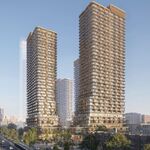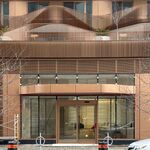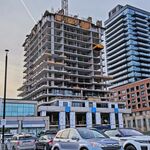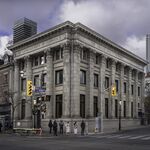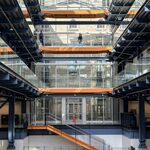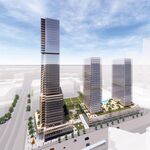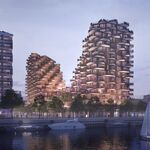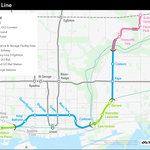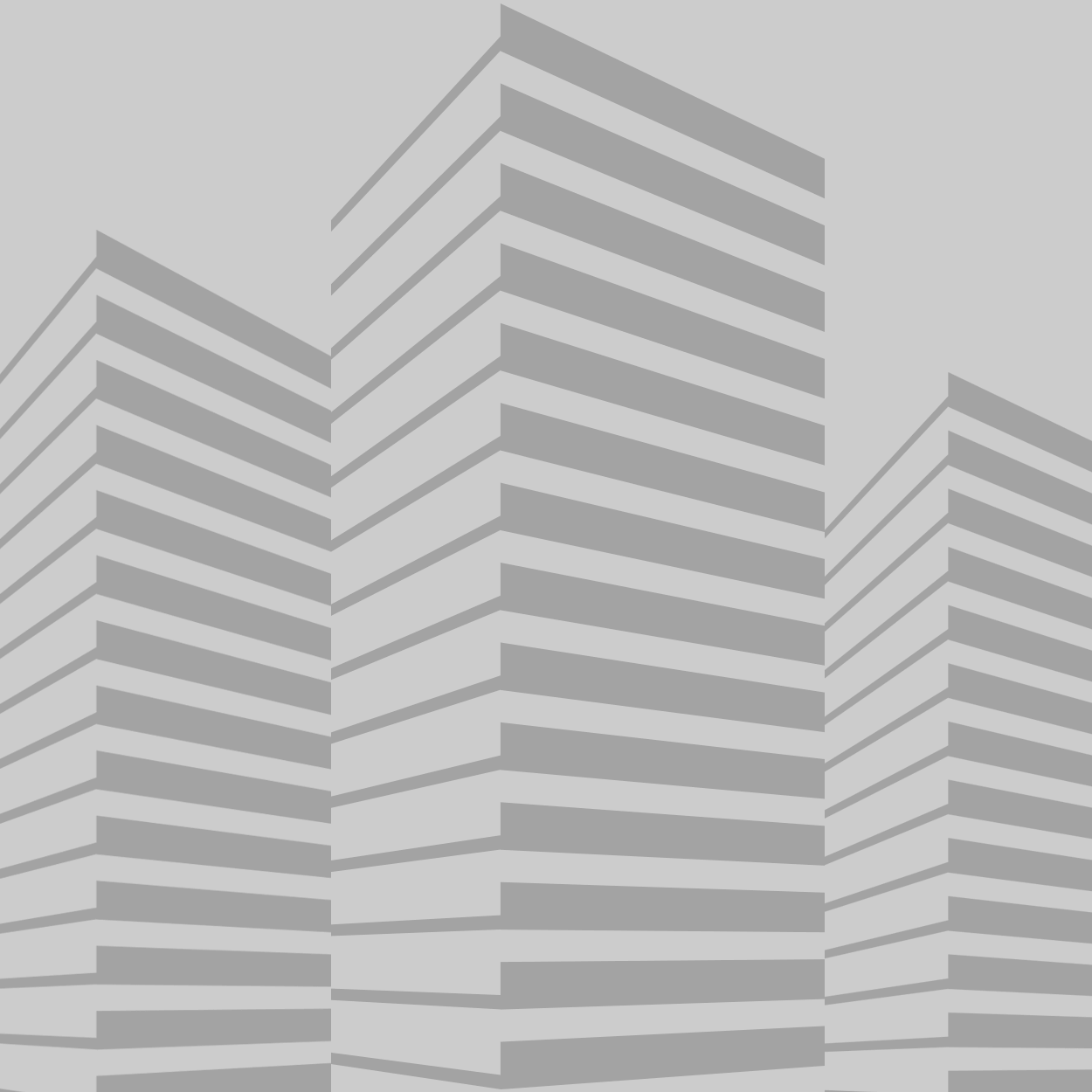The Toronto Design Review Panel met last week in an all-Etobicoke session, where they reviewed two very important and transformative projects for the redevelopment of the former suburb. First presented with the in-progress reconfiguration of the infamous Six Points interchange area, Panel members were then treated to their first review of the Etobicoke Civic Centre (ECC) on the lands of the former Westwood Theatre. Following a high-profile international competition in 2017, Copenhagen-based Henning Larsen Architects were awarded top prize along with local firm Adamson Associates to design and build the ECC, a new community and civic hub that will anchor a new residential community in the heart of Etobicoke Centre. Since then, the design team has been working hard behind the scenes, making tweaks and modifications to the building as it works its way through the design process.
 Bird's eye view looking north toward ECC, image courtesy of the City of Toronto.
Bird's eye view looking north toward ECC, image courtesy of the City of Toronto.
Several key changes have been made since the competition phase. First, the tower volumes have been reduced in size, as changes to the interior layout and space requirements have decreased the overall massing. The formal arrangement of the stacked towers remains, as does the grouping of the volumes toward the north edge of the site, but they are now slightly reduced in size.
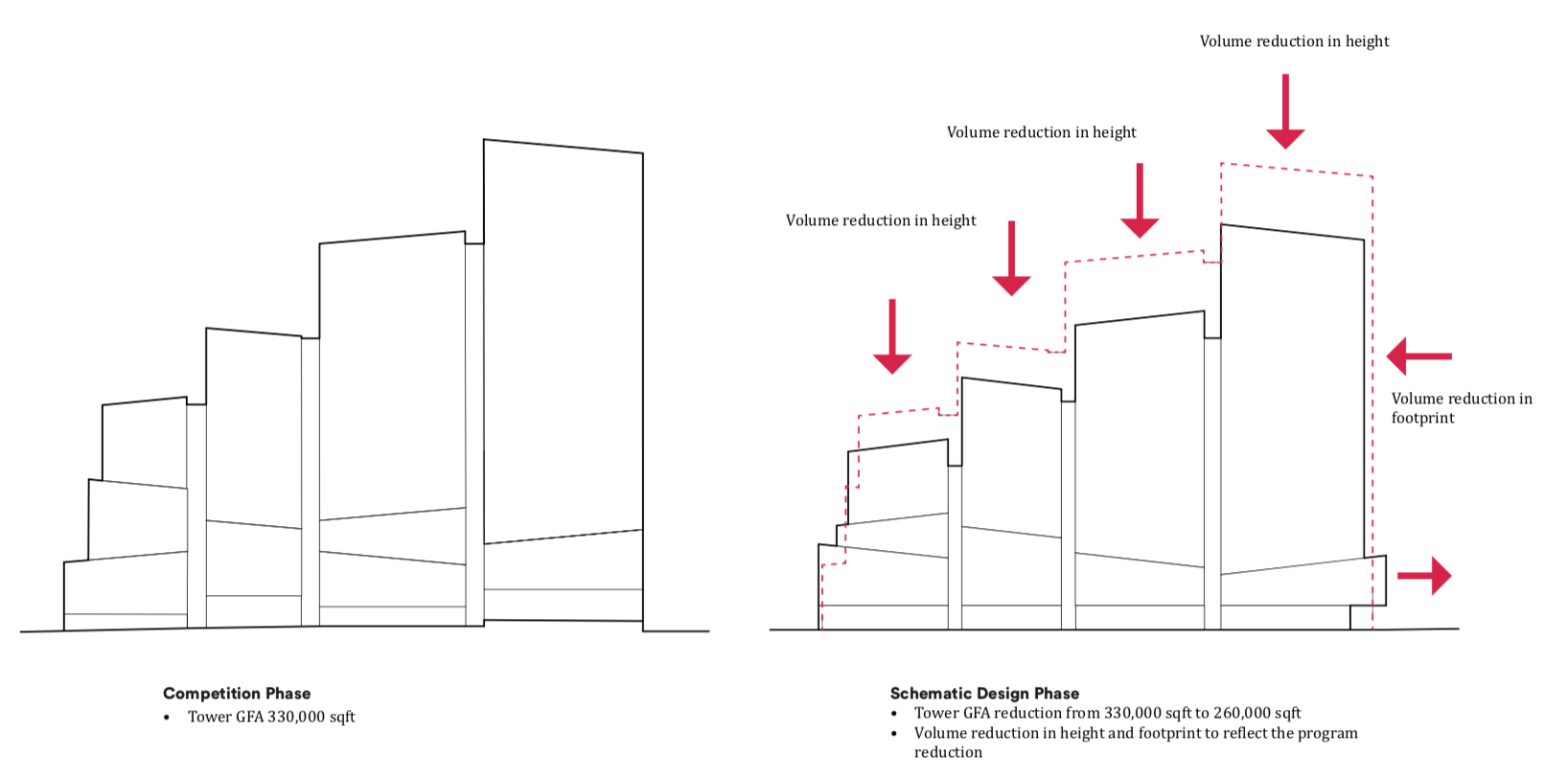 Reduction of tower massing, image courtesy of the City of Toronto.
Reduction of tower massing, image courtesy of the City of Toronto.
Second, the smaller volumes bordering the civic plaza to the south have been rearranged. The library component was previously considered as a second phase of the project to be constructed at a later date, but it has now been moved into the first phase, and as a result it has been shifted from the east edge to the west edge of the site. Furthermore, the eastern low-rise volumes have been simplified and consolidated into two larger volumes that contain the gymnasium and pool, which now face onto the civic plaza with walls of glazing.
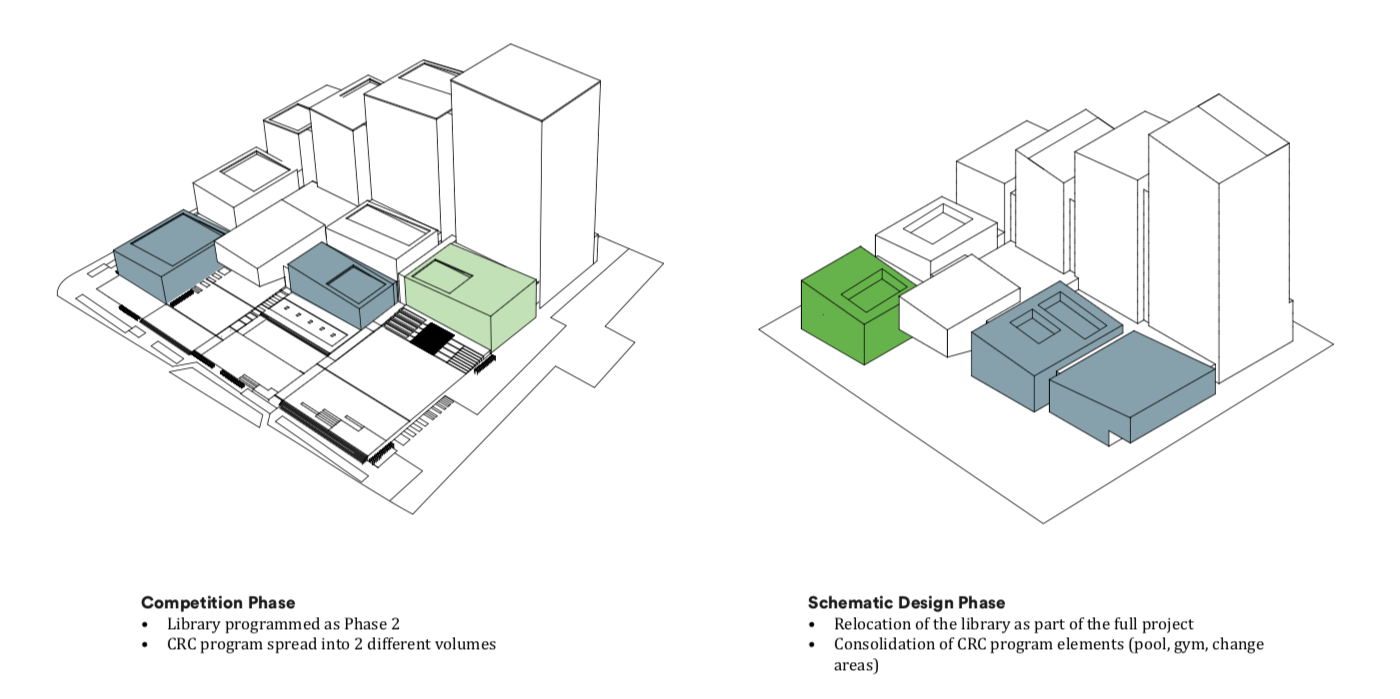 Rearrangement of low-rise volumes, image courtesy of the City of Toronto.
Rearrangement of low-rise volumes, image courtesy of the City of Toronto.
The third revision to the design involves the principal circulation path through the building. Due to the slope of the site, the competition entry had initially used a grand exterior staircase within the civic plaza to bring visitors up to the ground floor of the building, which was level with Bloor Street to the north. The new iteration has lowered the main south entrance to the level of the plaza and has eliminated the exterior staircase, instead opting to have two ground floors with main entrances at grade on both the south and north facades. In this scheme, the central atrium becomes the main vertical circulation that transitions between the two entrance levels, and a feature staircase within the atrium becomes its centrepiece.
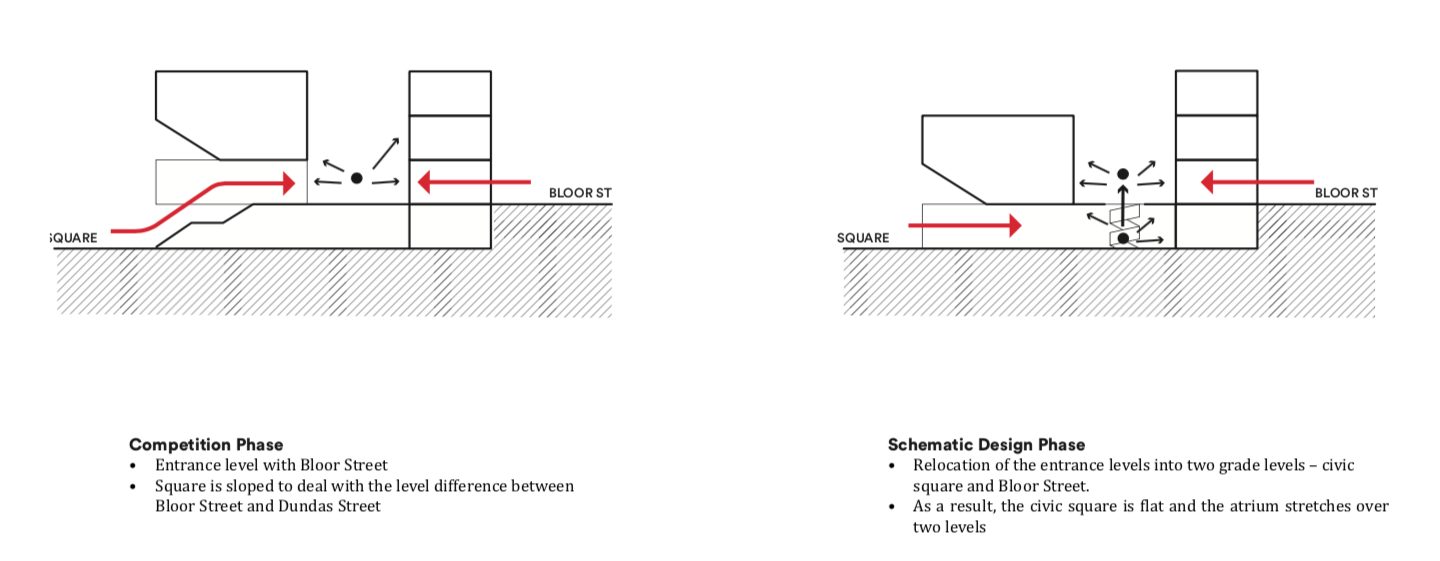 Adjustment of building circulation, image courtesy of the City of Toronto.
Adjustment of building circulation, image courtesy of the City of Toronto.
The final significant revision to the design involves the location of the parking and loading entrance. Initially, the loading dock was located at grade on the northeast corner of the building, with access provided from 'Street B' to the east. The loading dock has since been moved down to one level below grade, with access provided via a ramp off of 'Street B' from the southeast corner of the site.
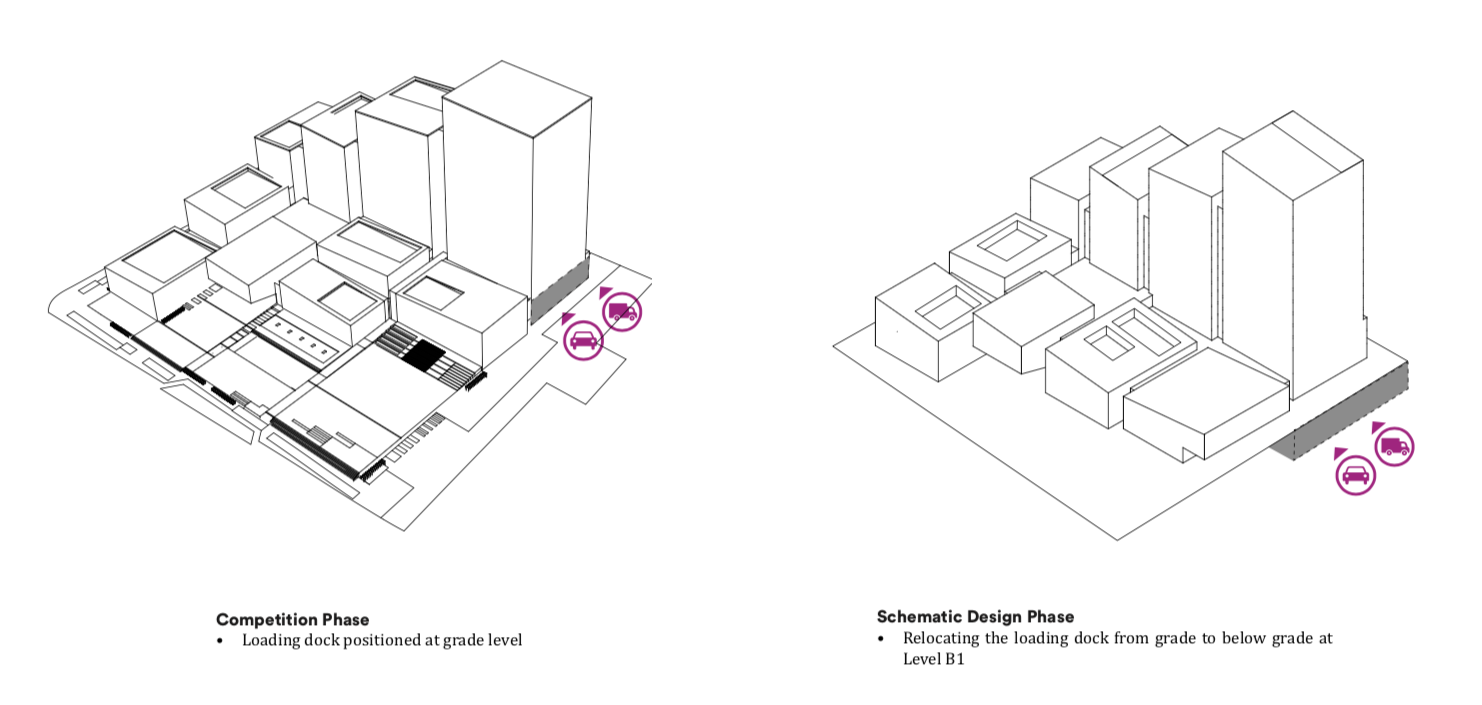 Relocation of the loading dock, image courtesy of the City of Toronto.
Relocation of the loading dock, image courtesy of the City of Toronto.
Several other smaller changes have been made to the building, including adjustments to the rhythm and spacing of the vertical fins that comprise the exterior cladding, and further refinements to the layout and finishes of the interior spaces.
A central theme to the design of the building is the clash of civic and community functions within the same structure. The community functions are mainly located on the lower three levels, and contain a library, gymnasium, pool, council chambers, child care centre, and various multi-purpose rooms. These are situated mainly in the low-rise volumes to the south along the civic plaza, with community-oriented municipal services located in the lower floors of the towers. The civic functions will be contained in the upper floors of the towers located to the north of the site, and will be mainly composed of office and meeting rooms.
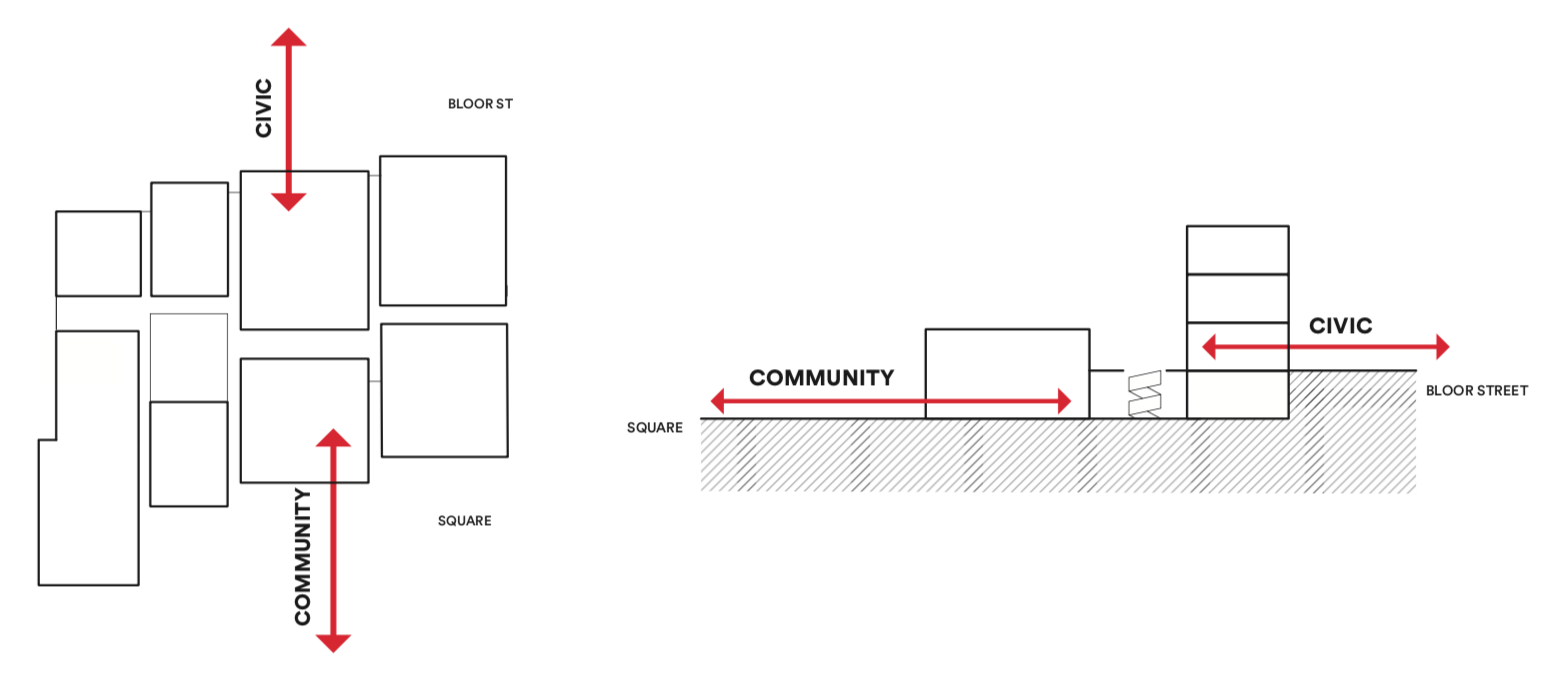 Diagram showing relationship of civic and community functions, image courtesy of the City of Toronto.
Diagram showing relationship of civic and community functions, image courtesy of the City of Toronto.
A large central atrium divides the northern towers from the southern low-rise volumes, creating a common circulation space that connects both together. The fourth and fifth floors of the towers are also envisioned as the transition spaces between civic and community, and will contain shared meeting and conference rooms where members from the community can meet and interact with City staff.
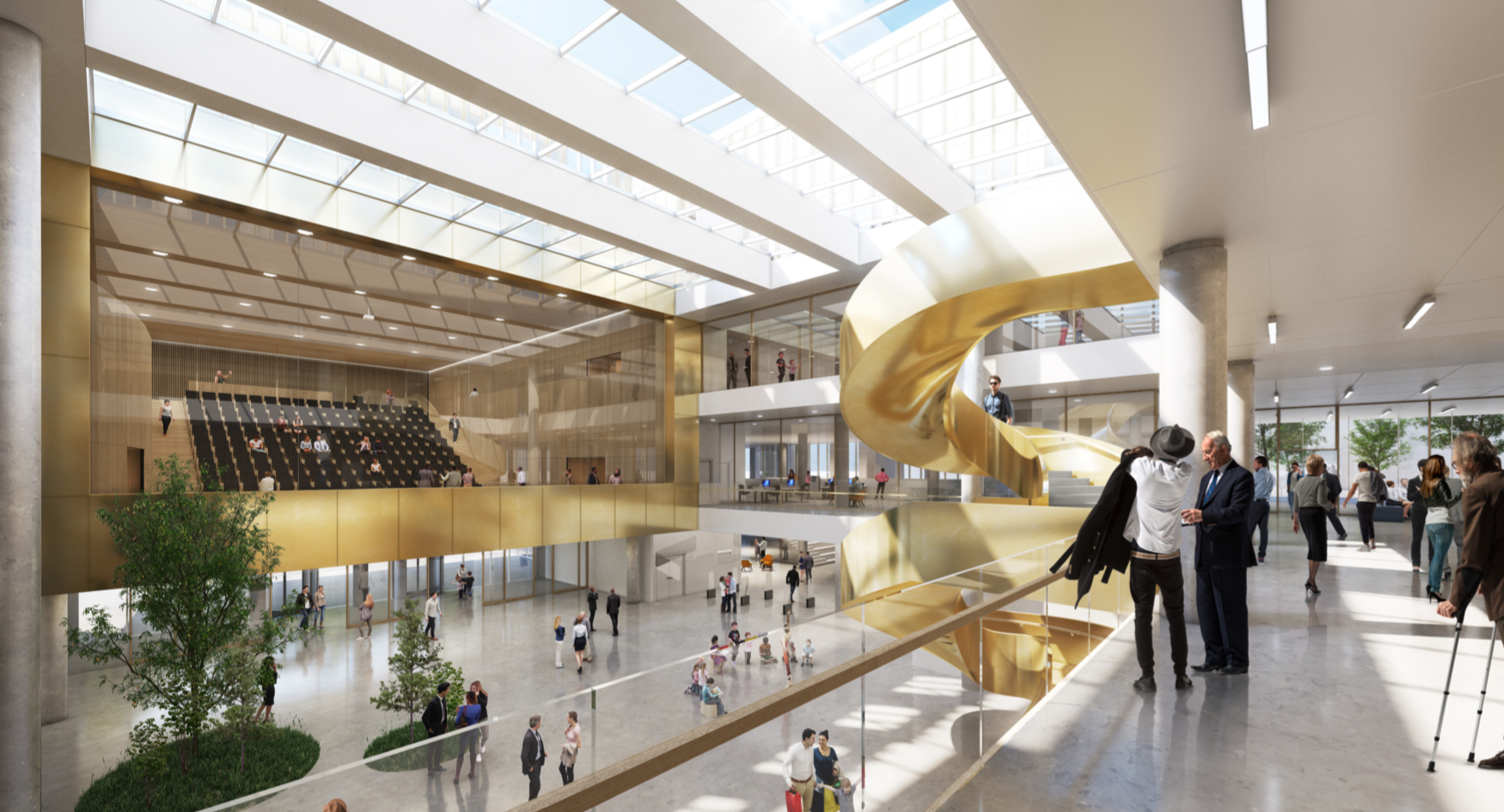 Rendering of the central atrium, image courtesy of the City of Toronto.
Rendering of the central atrium, image courtesy of the City of Toronto.
The main entrance on the north side of the building enters into the Counter Strategy room, which is a one-stop shop where members of the public first interact with City staff, who then direct them to the appropriate department or area of the building. The design of the Counter Strategy room is still in development, but in its present form, it would include a large continuous circular counter, with waiting areas and meeting areas where City staff can engage with the public.
 First floor plan (Bloor Street level), image courtesy of the City of Toronto.
First floor plan (Bloor Street level), image courtesy of the City of Toronto.
Transparency and connectivity are two important themes throughout the building, with visual connections established between adjacent interior spaces. Those waiting in the Counter Strategy area are treated to a wall of glass into the gymnasium, where they can pass the time watching runners on the track. The atrium provides direct views into the pool on the lower level, while a large wall of glass provides views directly into the council chamber on the second level.
 Rendering of the Counter Strategy waiting area, image courtesy of the City of Toronto.
Rendering of the Counter Strategy waiting area, image courtesy of the City of Toronto.
The Panel had plenty of congratulatory words for the design team, calling the project "remarkable", "beautiful", "interestingly different", and a "once in a lifetime building" that "sets an extremely high bar for the design community and for the city". While Panel members were very supportive of the design, they also offered some constructive criticism to help make the building even better as it continues through the design process.
 Rendering of the pool area, image courtesy of the City of Toronto.
Rendering of the pool area, image courtesy of the City of Toronto.
One of the largest criticisms from the Panel concerned the location of the parking and loading access ramp, which chops off the eastern edge of the civic plaza and poses as a barrier between the plaza and 'Street B', a new local road being added to the brownfield area. Panel members unanimously agreed that this placement was problematic for the success of the plaza and that the location of the access ramp should be reconsidered.
Another common criticism from the Panel was the lack of entrances into the building. Other than the main entrance from the plaza to the south and the secondary entrance from Bloor to the north, there are no other significant public entrances into the building other than those used for dedicated functions, such as the separate entrances to the library, cafe, and art gallery. Panel members emphasized that this is problematic, and that beyond forcing people to walk long distances to enter the building, it greatly reduces the porosity and accessibility that one would expect of a civic and community building. As well, the lack of entrances does little to help activate the plaza and public realm; Panelists pointed to the library, gymnasium, and pool volumes, all of which face onto the plaza with large expanses of glazing, but none of which are directly accessible from the plaza itself.
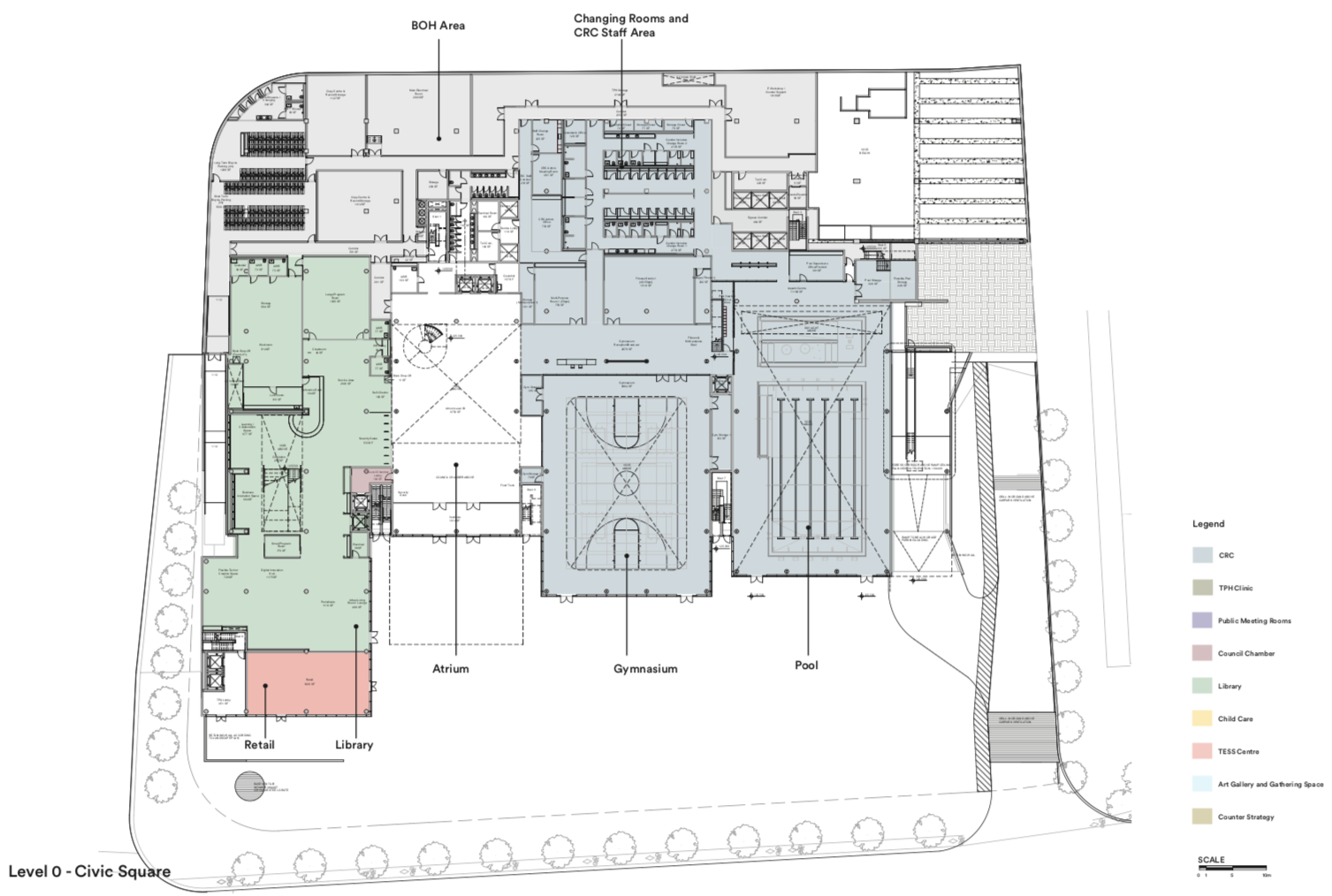 Ground floor plan (civic plaza level), image courtesy of the City of Toronto.
Ground floor plan (civic plaza level), image courtesy of the City of Toronto.
In conjunction with the lack of entrances, Panel members suggested that there was an opportunity to include more intimate spaces throughout the building that would supplement the larger communal spaces and enrich the user experience. One Panelist pointed to their disappointment at the apparent "cracks" between the volumes that could potentially house smaller, more intimate public entrances, but instead only contain fire exit stairs that are typically not used by the public.
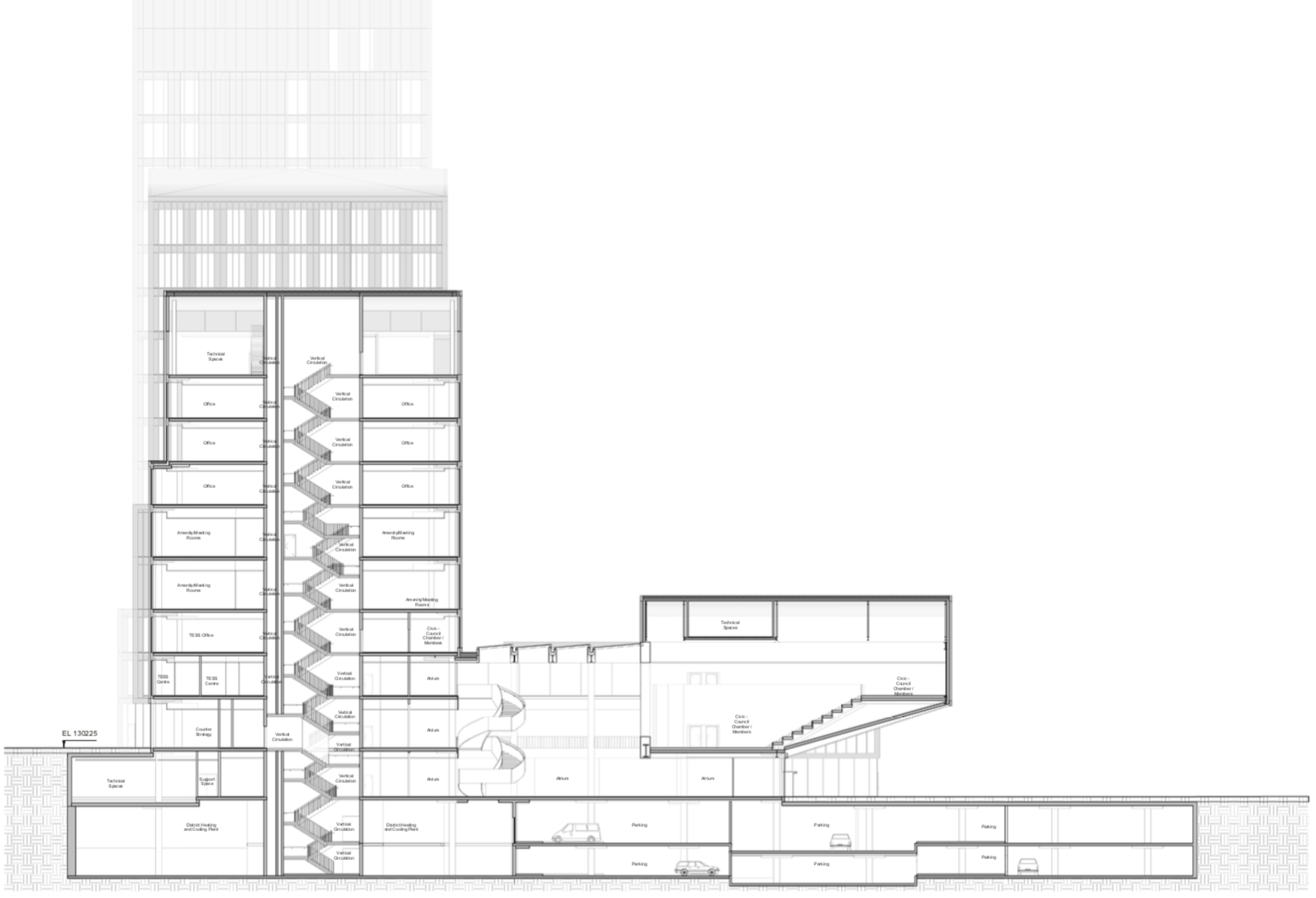 North-south building section, image courtesy of the City of Toronto.
North-south building section, image courtesy of the City of Toronto.
The treatment of the north facade was also questioned by the Panel, who suggested that the massing and tall walls were somewhat overwhelming at street level, and that further refinement might help to incorporate an appropriate street facade along Bloor. They also recommended that the main north entrance into the Counter Strategy area should be better expressed and emphasized within the facade as an important public entrance.
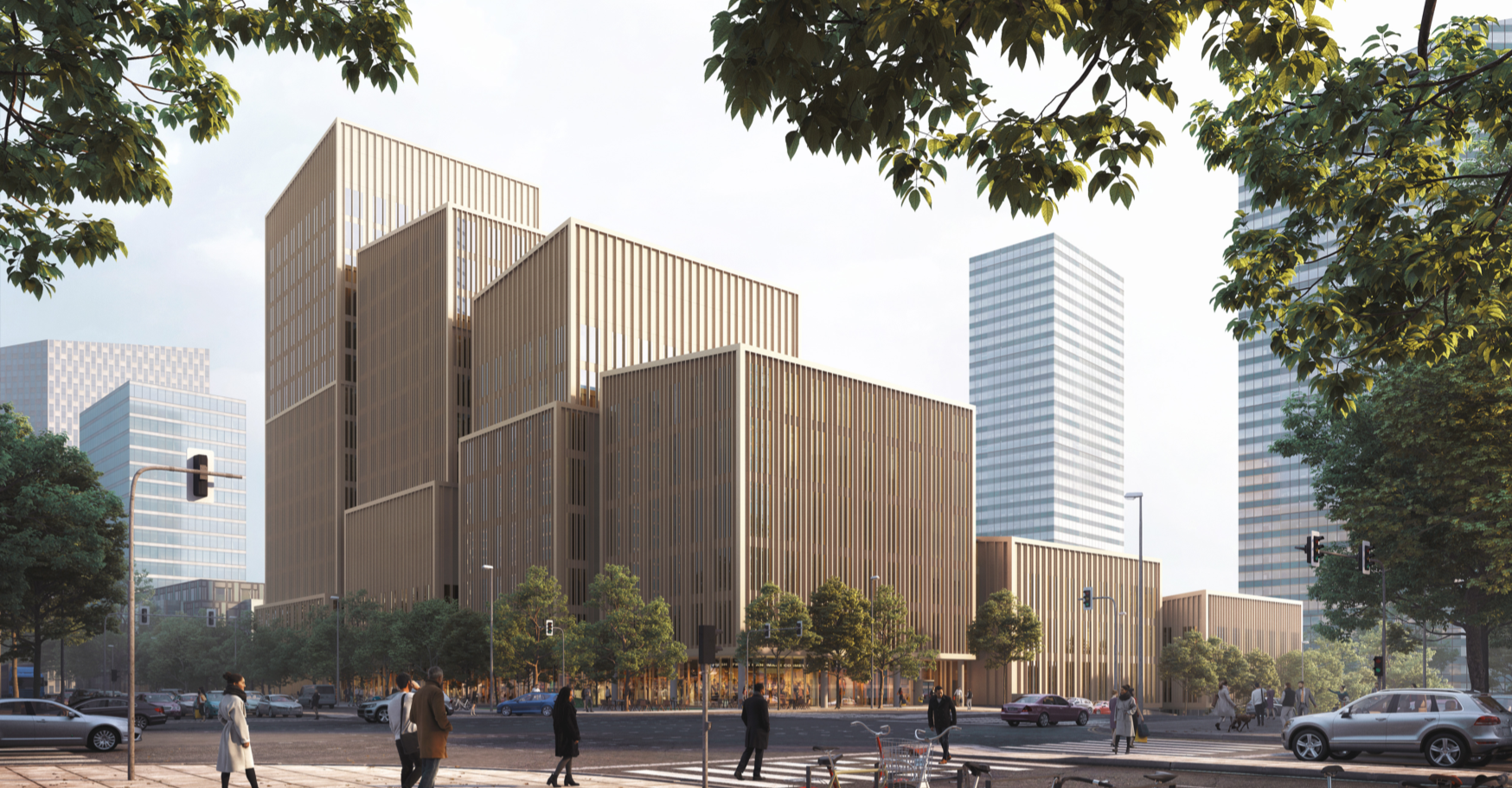 Rendering of the north facade along Bloor, image courtesy of the City of Toronto.
Rendering of the north facade along Bloor, image courtesy of the City of Toronto.
Related to the massing and articulation, the Panel was more or less split on whether the uniform treatment of the facade was a positive or a negative aspect of the design. Some Panel members argued that more diversity and variation in the form and materiality, which could be as simple as integrating more glazing or more variation in the rhythm of the vertical fins, might help break up the "relentlessness" of the homogenous volumes, while others argued in favour of the uniform treatment, saying that it counteracted the variety of the numerous developments that will eventually grow around it.
Landscape and public realm were also a hot topic with Panel members, who were unimpressed with the landscape design illustrated in the renderings. The design team acknowledged that the landscape and public realm was lagging behind the design of the building, and that it would be further resolved through the design process. The Panel emphasized that a well-designed public realm is essential for the success of the building, and that it should be advanced concurrently and given the same attention to detail as was given the ECC itself.
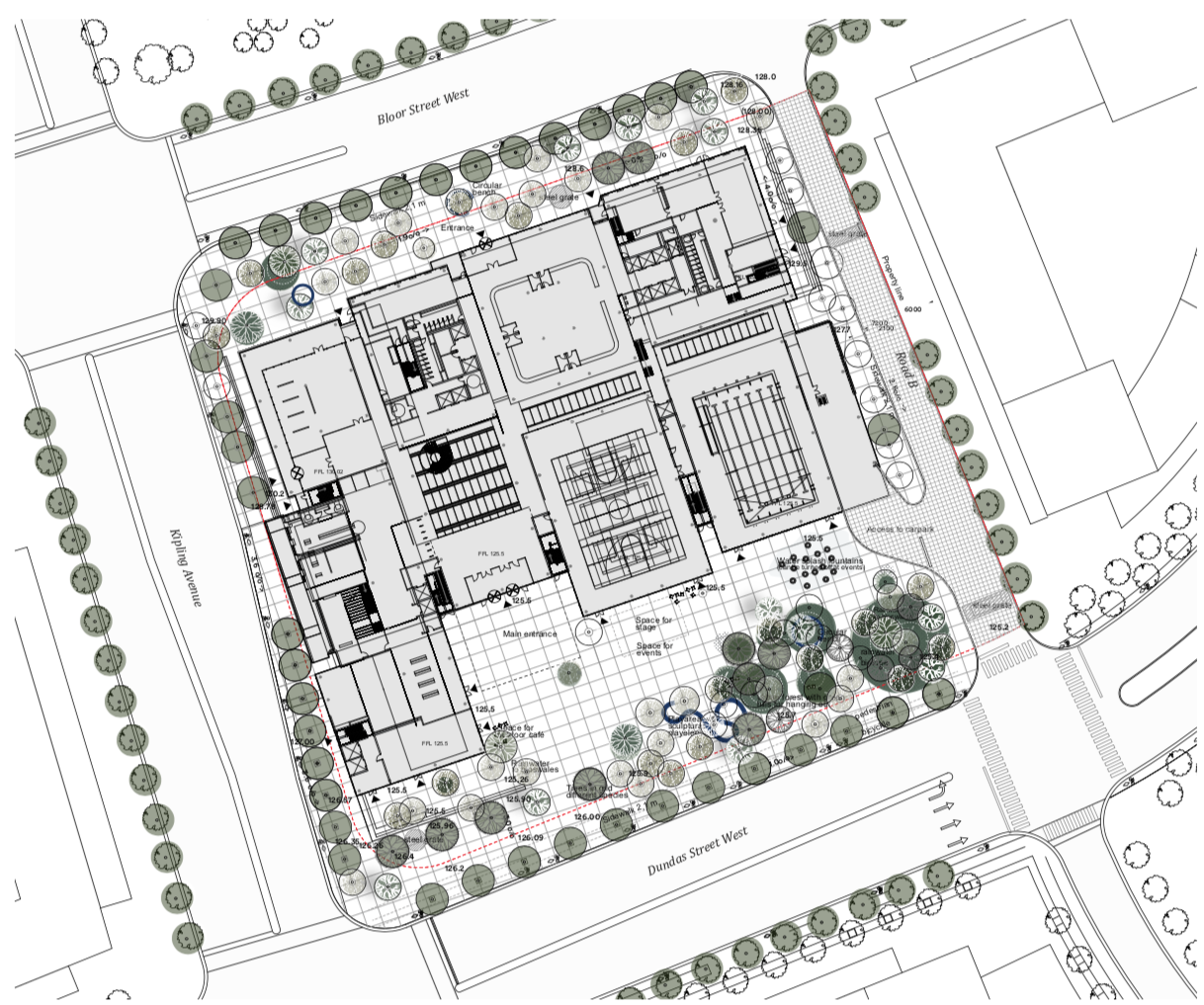 Landscape concept plan, image courtesy of the City of Toronto.
Landscape concept plan, image courtesy of the City of Toronto.
Panelists also stressed that the relationship of the building to its context is very important to the success of the building. Given the reconfiguration of the Six Points intersection, the ECC is basically given tabula rasa with little to no context to work with, and this was evident in the design of the public realm. But the Panel emphasized that the lots around the building will eventually be filled in with residential and commercial development, and that the City and the design team must carefully consider how the ECC will relate to and interact with these adjacent buildings. Panel members even went so far as to suggest allowing the ECC design team to have a say in the articulation of the facades of the adjacent developments around the civic plaza, as these will inevitably have an impact on the experience from within the plaza itself.
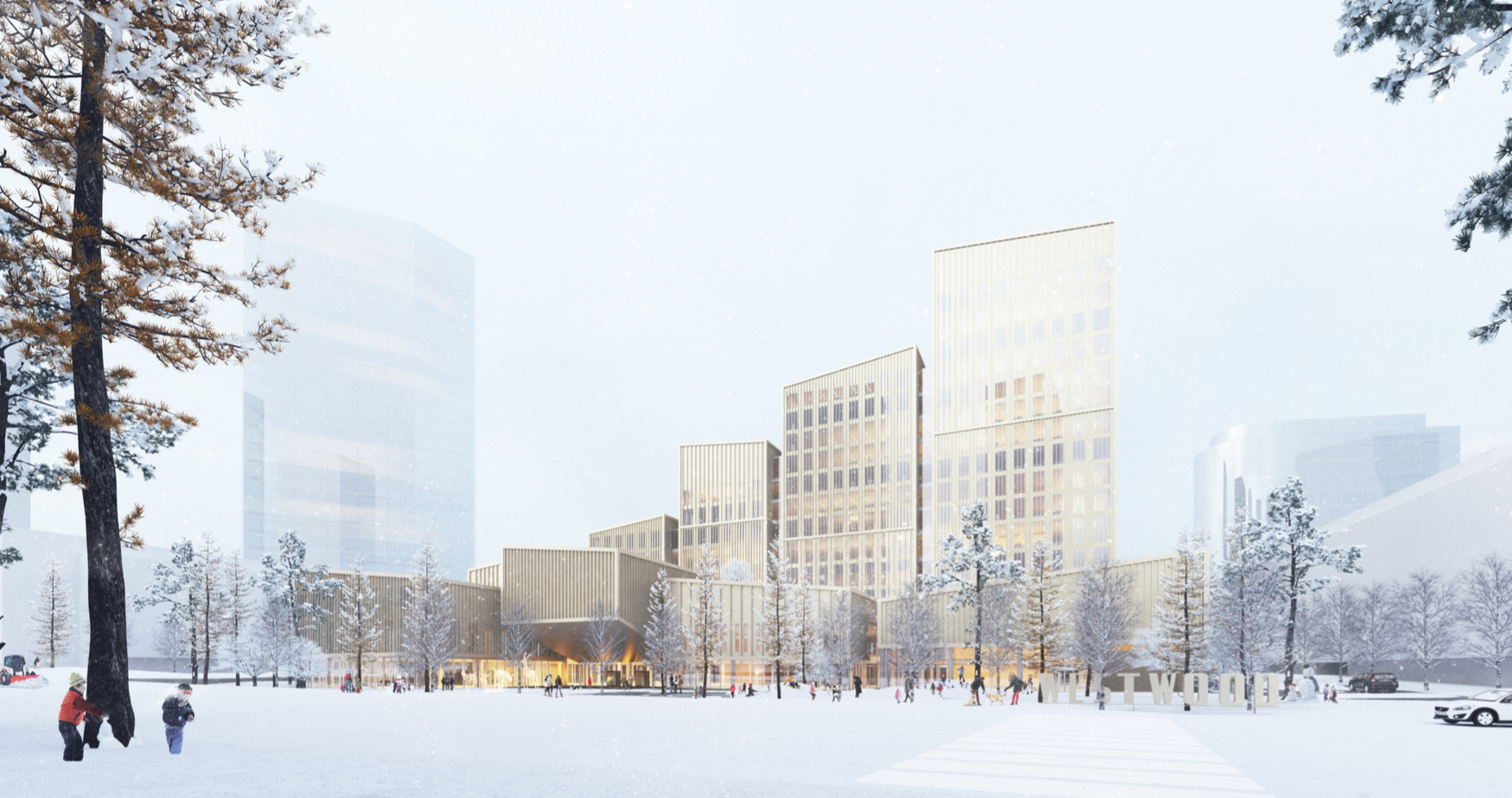 Rendering looking north across the plaza to the ECC, image courtesy of the City of Toronto.
Rendering looking north across the plaza to the ECC, image courtesy of the City of Toronto.
A few other suggestions from Panel members offered different points of view for the design team to consider. One pointed out the lack of Indigenous recognition in the project, adding that they "don't think the City can have a public project at this scale without having Indigenous recognition", and that the design team must consider the "new Canadian context" of reconciliation with Indigenous peoples and their inclusion within urban contexts. As well, despite the focus of the designers on the experience of pedestrians and the feature staircase within the central atrium, one Panel member suggested that the main access to the building is likely to be via automobile, and that while a good pedestrian public realm is important, the design team should also consider the experience of the user who enters through the parking garage and accesses the building via the elevators.
Overall, the Panel was impressed and excited by the ECC proposal, and stressed the importance of the project not just for Etobicoke, but for the city as a whole. They praised the landmark design and the efforts of the design team, and encouraged them to continue to improve the design with an eye for the wider context. There was no vote at the end of the session, but it is likely to eventually return to the Panel for another review.
We will keep you posted as the ECC project continues to evolve, but in the meantime, you can find additional information and images of the previous version in our database file for the project, linked below. Want to get involved in the discussion? Check out the associated Forum thread, or leave a comment in the field provided at the bottom of this page.
* * *
UrbanToronto has a new way you can track projects through the planning process on a daily basis. Sign up for a free trial of our New Development Insider here.
| Related Companies: | Adamson Associates Architects, Entuitive, EQ Building Performance Inc., Knightsbridge, MGAC Canada, Multiplex Construction Canada Ltd., Mulvey & Banani |

 10K
10K 




















